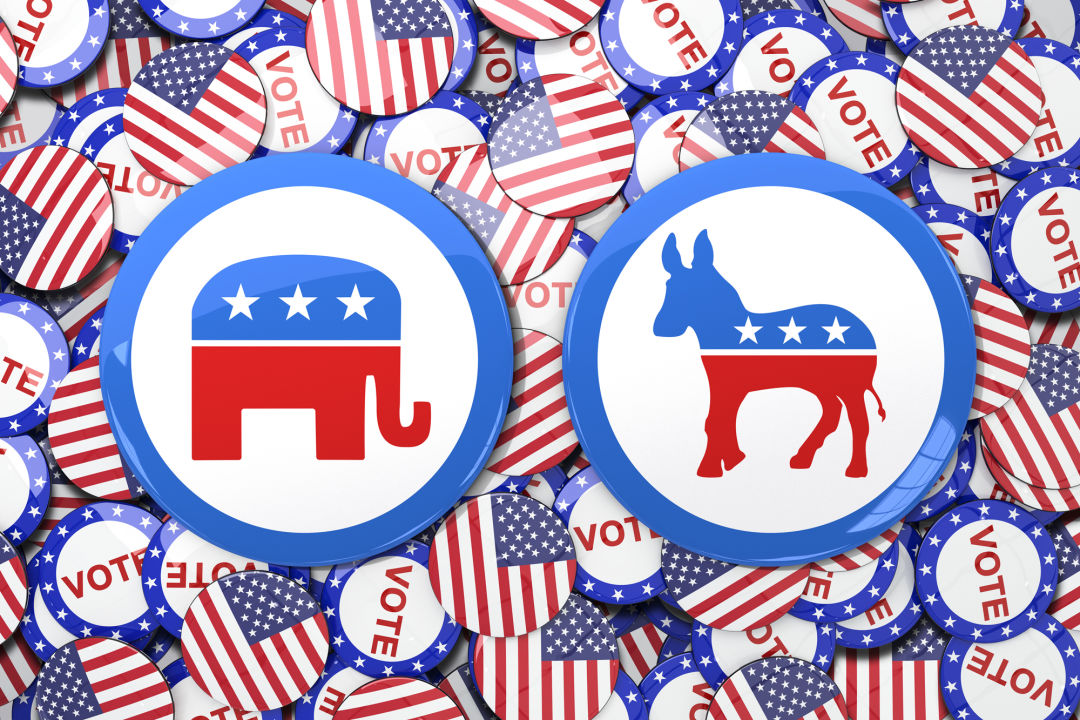With Oregon’s Closed Primaries, Nonaffiliated Voters Have a Much Shorter Ballot

Bonkers for Biden? Giddy for Gabbard, feeling the Bern, or rarin’ to go full Warren (just to make a statement, as those last three have suspended their campaigns)? Think Trump is, in fact, making America great again and we need four more years? Jazzed to vote for one of the five candidates in the secretary of state race in this pivotal census year? Or maybe you live in a competitive statehouse district, and your neighborhood is blanketed with campaign signs for the hopefuls?
In Oregon, more than a million registered voters won’t have any of these races on their ballot for the May 19 primary election.
Oregon’s partisan primaries are closed: only voters registered with a major political party can vote for candidates of that party. While some opted for a third party, most of the voters who will get a shorter ballot—one listing only nonpartisan races, such as local city council or judicial contests, and ballot measures—are registered with no party at all and may not realize they won’t have say in the primary.
The number of such so-called nonaffiliated voters, or NAVs, has skyrocketed since Oregon’s “motor voter” automatic registration policy took effect in 2016. At the end of 2015, before the motor voter law took effect, there were 527,000 NAVs, about 24 percent of all Oregon registered voters. By this month, there were approximately 969,000, or 34 percent of registered voters. That’s second only to registered Democrats in Oregon (996,245 as of April 2) and far more than the number of registered Republicans (705,800). The number of NAVs overtook the number of Republicans in early 2017; dive into the state data to see more trends.
“I talk to voters each election who are very upset, who have gotten a ballot that doesn’t show the office that they want to vote on,” says Tim Scott, Multnomah County’s director of elections. “That is the challenge of our closed primary system, combined with Oregon’s voter registration and party change deadline, which is the 21st day before the election, and ballots don’t go out until the 20th day. Unless folks are aware of what party they’re registered with, they might be a bit surprised when they get their ballot.”
Under the motor voter law, any unregistered person who applies for or renews a driver’s license or other state ID at the DMV is automatically registered to vote, but in order to register with a party (and thus vote in a party’s primary) the newly registered voter must look out for follow-up instructions in the mail or know to go to the state elections website (oregonvotes.gov) and select a party before the next election’s registration deadline (April 28 for this May’s primary). Democratic and Republican races are part of the state primary; smaller parties—Independent, Constitution, Working Families, to name a few—run their own contests.
While there has been the occasional ballot initiative to shift to a system for state races in which all candidates appear on primary ballots, regardless of party, and the top two vote-getters overall advance to the general election, instead of just the top finisher in each party, those measures have failed—most recently in 2014, by a landslide. (Opponents of the 2014 measure included such strange bedfellows as Planned Parenthood and Oregon Right to Life.)
Scott’s office undertook an outreach campaign this spring, including direct mail to every household in the county. “Our goal is that every voter in Multnomah County hears something saying, ‘Do you know what party you’re registered with because this is the election that it matters?’”
Local political parties have their own awareness campaigns, too. Stephen Lloyd, a precinct chair with the Multnomah County Republican Party and head of the Young Republicans of Oregon, says the GOP was doing events and door-knocking before coronavirus stifled those activities. “We don’t think about voting very often, so when it comes up and you start hearing about it and you think, ‘Oh, it’s OK, I’m registered,’ don’t take it for granted. Definitely, definitely check. We want the most people to have a say in their governance.” A former NAV himself, Lloyd says that “in order to make the biggest impact [under the current system], I can’t be a member of the Green Party or the Tea Party or the Progressive Party.” (Even registered Republicans might be missing out on a race: in six Portland-area House districts, out of 60 statewide, no Republican has filed to run, so in effect only registered Democrats will get to pick the district’s rep.)
Marcia Schneider, a district leader with the Multnomah County Democrats, says the state party pondered opening the Democratic primary to other voters, but under the current system it didn’t seem feasible. “The thing about that is it may sound really attractive, but the actual logistics of it are kind of a nightmare,” she says. “Each voter individually would have had to contact their county clerk to request the party ballot.”
Instead, the Democrats undertook an aggressive “Be a Primary Voter” campaign to ask motor-voter registrants to consider joining up, even if only temporarily. While initial plans included door-knocking, complete with an app to provide volunteers a list of nearby nonaffiliated voters to talk to based on the volunteer’s immediate location, COVID-19 turned the focus to calls, texts, and postcards. No matter the medium, Schneider says, the message is the same: “If you want to vote in the Democratic primary, you need to update your voter registration.... It takes maybe two minutes, and it isn’t permanent if you decide you would like to do that and then go back to being an NAV.”
Former Oregon secretary of state, Phil Keisling, who oversaw the state’s first-in-the-nation transition to voting by mail, considers the requirement to reregister with a party three weeks before the election to be too high a barrier. “In a vote-at-home situation, you definitely have the challenge you don’t have in [a place like] New Hampshire, where people can just walk in on the day of election and decide to change their registration,” he says, but notes that our mail-in ballots don’t have to have such a hard deadline. Keisling points out that another vote-by-mail state, Colorado, has adopted “an especially elegant solution to this longstanding problem” by sending nonaffiliated voters a thick envelope with both Republican and Democratic primary ballots and letting them choose which one to fill out. Keisling, who was a chief petitioner of a failed 2008 ballot measure that would have shifted the state to nonpartisan top-two elections and a supporter of the similar measure in 2014, says “political parties will fight you like wounded badgers” in their opposition to open primaries or top-two systems, but that he hopes the increasing number of NAVs will prompt major parties and the state legislature to take steps “to enfranchise this enormous group of people.”
Schneider, too, looks forward to Oregon making voting even easier, such as allowing for same-day registration or party changes. In Washington, another vote-by-mail state, voters don’t register with a party and instead check a box on their primary ballot to indicate if they are filling out the Republican or the Democratic section, but the specifics of that system might be more of a learning experience than a model to follow, she notes: “If you mess it up and you vote some Republican ones and some Democrat ones, then your ballot’s not good, and your vote doesn’t count. So that’s an interesting scheme, and it kind of works and it kind of doesn’t.” (Colorado, New Hampshire, and Washington have had the highest voter turnouts so far this primary season, though they were all in February or early March, before coronavirus restrictions set in.)
Scott, the county elections director, says the state might be primed to take down some more of its barriers to voting. “To me, it seems like, Oregon being such a state with forward-thinking, progressive, voter-registration rules, they would move to something like same-day voter registration like many other states have,” he says, “or at least moving it closer to the election date rather than having it out beyond the date to make a change when you get your ballot.”
With nearly a million registered voters potentially left out of the primary election, Lloyd says their numbers are too large to ignore. “It was pretty obvious that the Republican Party, and even the Democratic Party for that matter, can’t win without the influence of the nonaffiliated voter.”
Check your own voter registration, including your address and political party, on the Oregon Secretary of State website here.
Have a question or a story idea? Email [email protected].




